Leaderboard
Popular Content
Showing content with the highest reputation on 04/07/2021 in all areas
-
12 points
-
Now if you said, "I'm a student working on my A&P/IA, and I would like to have my own airframe and power plant to strip down and get into every detail." Then this would make sense. But if you're an aspiring pilot looking for an airplane to FLY? This is not the one. You'll have your ATP before that plane is ready to fly. And you'll have spent enough money on it to have owned two Mooneys that are flying today. Those who have been around here a while know that I have a list of people who have tried to do something similar. It's never worked out. Some of them are flying their Mooneys and now have $80K invested in a $40K airplane. Others never did get them flying, gave up after spending more on the repairs than to buy the plane, and then scrapped the project. If you aspire to be an A&P, then get yourself a project. If you aspire to be a Pilot, get an airplane that flies.8 points
-
I just uploaded an in flight demonstration and overview of all the features of the Garmin GFC 500 Autopilot. Enjoy!4 points
-
I flew my 180hp 63 mooney all over the country. I'm a big guy. 250lbs. My wife and kids are not. I've been all the way to Florida, Washington state, wisconsin, colorado, etc etc. Never found an airport short of leadville or telluride I wouldn't go out of at gross. Based in Phoenix, I never had a problem hitting MEAs. I cruised as high as 16.5. took planning to get there, but I could do it. Flew pretty solid IFR for hours when I went to Florida. Great airplane. However.... My family outgrew it. And outgrew it's capabilities. We traveled so much, we really needed something bigger and more capable. With a smaller family, a 252 would probably have been where I went, but I went 310 instead. I've got a 78 T310R with FIKI, onboard radar, basically all the bells and whistles. I don't think there's many days I won't fly. For your budget, you can get a very very well equipped 310 and accommodate your growing family. For reference, I paid less than half your budget for mine. Insurance with literally ZERO twin time was $5300. I had about 800 hours of complex time, but I've only been flying for 4 years. Someday, the kids will be gone, and I'll probably find myself in another mooney, but I don't know. I like having the ability to fill up all 6 seats, luggage, and fly 3 hour legs. All that said, you can't go wrong starting with a nice mooney. They're comfortable, they fly well, and they're very economical. You can go faster, at less than half the fuel burn and cheaper maintenance. If I had to do it again, I'd do it the same way. A less expensive plane to see if we'd "like" traveling by our own airplane. Less expensive maintenance while you're learning how to be an owner.4 points
-
In the 252, prior to the Encore conversion, and with a tired engine, I would consistently get 800 ft/min all the way to the 20's. After todays flight with a fresh engine and a bit more HP, it's a different airplane and I expect the climb will be quicker. I usually budget 20 or 30 minutes to get to cruise altitude between FL230 and FL260. But then my hangar is already at 5600 ft. I hear everyone saying they didn't get a Mooney to go slow. So to hell with the gas, we want to go fast. And I'm in complete agreement. But the best way to go fast A to B is to go non-stop. Climbing all the way into the flight levels doesn't make sense if you have to come back down for a fuel stop, and then climb back up again. And this is where the 252 Encore really excels. I fly at 65% power and 9.5 gph not to save gas, but to go fast. And going fast means being able to skip the fuel stop everyone else is making.4 points
-
It is only a surprise the first time. And that should be in your check out ride.4 points
-
As a 252 Encore owner, I'll say that ALL Mooneys are great. From the M20B to the M20V they are all unbelievably efficient and yet very fast airplanes. But when you zero in and start splitting hairs, the 252's really seem to be the top of the heap for me. My real world numbers are 9.5 gph and as fast as 195 knots TAS at that fuel flow up at the top of it's available altitude. That gives me an engine out glide ring of well over 50 miles. It also gives me more than 1000 miles of range with reserves, all on standard tanks. I can top most weather. Ignore terrain even in Colorado. And just like an Ovation can sacrifice fuel and range to go fast, I just have to strap on the O2 mask to get the speed and even better range. Add 1100 lbs of useful load in the Encore spec, and it's a pretty capable traveling machine.4 points
-
3 points
-
1968 M20F The other day, I was reminded once again that when it comes to aviation, you always need to be ready for anything. My throttle cable became disconnected at the throttle arm. My wife and I had landed a few days prior at KAAF (a great place for raw oysters and seafood!). It had been a great IMC/IFR flight, and we flew almost down to the circling minimums before we broke out and circled, landed, taxied in, and shutdown. A few days later, we were to depart. But allow me to back up - like many of you, I suspect, I normally set about 1100 RPM just before I pull the mixture when shutting down. And generally use the Don Maxwell "How to start a Lycoming fuel injected engine" methodology for starting. And that's exactly what I had done. The approach and landing was fine. Taxing was fine. Setting 1100 RPM was fine. Normal shutdown. But two days later, as soon as I cranked up, I knew we had a problem. The throttle was completely unresponsive. I shut her down and asked Jim, Centric Aviation's mechanic to take a look. After removing the cowlings, he found that the linkage was disconnected at the throttle arm. Still on the arm, held by a thin layer of engine oil/residue, was the washer. The bolt was found nearby in the lower cowling. But both the cotter pin and the castellated nut were missing. Gone. Vanished. Jim got us fixed up and going in no time at all. By the way, all the people at Centric Aviation/KAAF are great, great folks. They treat us like royalty every time we go there. I'm so thankful/lucky/blessed that it didn't happen when we were airborne, and in the clouds. At WOT. Or worse yet, near idle, in the clouds, while slowing down to configure. Our planes back home now, at KFFC, and in its annual, and I'm having them look closely at that particular linkage for any signs of anything in the proximity that could cause a cotter pin to fall out. Of course, I've asked them to look closely at all my other linkages for condition and security. So now this is to you, gentle reader. What else can we, this awesome community of Mooney enthusiasts, learn from this incident? I'm all ears.3 points
-
I talked to the mechanic, who said he pulled two more lifters. “They were garbage,” he noted, apparently satisfied that they were the cause of all the metal in the oil filter. It seems that is a common Continental issue. “You should be good for another five years,” he promised. So having written a check for shiny things to replace corroded things, I sit back and wait for miracles to be worked. whew!!! thanks, all, for the kind wishes!3 points
-
3 points
-
Blessed has nothing to do with it. I choose to live in the state I do for many reasons. Most airplanes I owned a year or two. I have owned two airplanes at once a few times. In 2,500 hours of flying I've only overhauled one engine. But given the average TBO is in the 2,000 hour range, statistically that is reasonable. I sold my Bonanza with 2300 SMOH on a 1700 TBO. Operating engines properly goes a long way toward them living long and happy lives.3 points
-
In my 231 at 24,000 I see 198-200 TAS at 75% power. That is about 13 gph fuel burn. Note: I have an intercooler and upper deck pressure controller which partially closes the gap to a 252. With the modifications, my 231 comes pretty close to the factory 231 mph speed claims while running at 75% power.3 points
-
Not really. My first wife had cancer. The most important thing is to not compare the two. You chose them for who they are. Airplanes are the same way. Usually when you talk to a pilot that has flown competitors, Cirrus and Mooney or Airbus and Boeing they will appreciate both designs. You really only run into zealots with people who have little to no experience in both.3 points
-
It’s sometimes depressing to compare TAS numbers in the Bravo to others based on the fuel we burn, but it’s really about having the option to go into the FLs when needed or to catch a tailwind. Sure, the 252 can do it all on less fuel, but (I tried to complete the sentence but could not, you win @gsxrpilot!)3 points
-
NHey gang, thought I'd let you all know what I ultimately did on my "hanger" towbar. All materials supplied by Lowe's, and EASILY made myself. I ended up using 1/2 inch iron piping for the t-handles, a long 48” 1/2 inch pipe for the length. But at the bottom, I used a "transition" elbow-- 1/2" on one side of the elbow, and 3/4" on the other side of the elbow. Into that side I screwed a 8 inch long section of 3/4" pipe, which is what I now insert into the tow socket of the plane. (Hope all of this is making sense.) I used some leftover red paint and painted everything but the 3/4" pipe red, which I left bare. How does it work? Like a champ! The plane's much easier to tow and turn, especially when I need to get leverage and lean back into the initial "pull" to get it unstuck from the hanger floor as well as on the return push back into the hanger. The project involved one trip to Lowe's, about five minutes or so to put it all together using two pipe wrenches, and two hours for the paint to dry. The 3/4 inch pipe fits the socket, and the 10 inch length is perfect. Great towbar. Total cost? $27. Parts list: Qty 1 1/2" iron pipe "T" (towbar connection to handles) Qty 1 1/2-3/4" iron pipe transition elbow Qty 2 10" x 1/2" iron pipe (for the handles) Qty 2 Optional 1/2” iron pipe cap ends for handle ends Qty 1 48” x 1/2" iron pipe (for the long towbar) Qty 1 10" x 3/4" iron pipe (to insert into the airplane tow socket)3 points
-
Thanks for the weather tips and experiences with these missions. It good to have validation that the airplane can do this mission. ...and I will do this mission regularly, but not this week. Now on to the pilot...Carusoam asked how the transition training has gone. It has gone well and I feel comfortable in the airplane. I've flown about 15hours so far, some in IMC, some xwind, but not as much as I've done in the C. One 300nm cross country. With hundreds of hours in the C, I felt like it was an extension of me. The Bravo...not yet, the only piece I'm still working on is the flare. I'm going to go commercial, there's too many links in the chain that are breaking. #1, my allergies are crazy and I had to take cold medicine this morning...even if it clears up that is a no go for tomorrow. #2 a weather forecast that is honestly too much for only having 15hours in the Bravo. #3 02 is INOP, limiting available altitudes.3 points
-
2 points
-
Says me don't do it unless you're an A&P or are really friendly with one. You can go upside down on a project like this very easily. Indeed people frequently do. There is a long thread from a Mooneyspacer who got a project Mooney probably in better shape than the one you are contemplating. I think it was two years of fairly constant effort before that Mooney flew. Repeat after me: There are no bargains in aviation. There are no bargains in aviation. There are no bargains in aviation.2 points
-
Iridium can only see 1090ES ADS-B out. The UAT folks will need to phone a friend or something.2 points
-
Talk to spencers at Kplu,they did a guys J with 2 g5,s and a 4 servo gfc500, he was quite happy2 points
-
Update... I pulled the the plane out on the apron and faced it East, took note of the compensated compass reading, removed the compass, then used the tool pictured below to degauss per the service bulletin. When I re-installed the compass it was reading 10 degrees different and this is in the East direction which was low deviation (N-W was the maim issue). So it seemed to have a big impact! I need to re swing the compass now and see how much it helped.2 points
-
205-210 ktas rich of peak. about 19.8gph 193-198 ktas lop about 16.3gph this is full gross, after a 1100-1400fpm climb burning 33gph. an ovation leaps off the ground and easily out climbs the acclaim until about 500’, then the acclaim is in a class of its own. someone else said earlier, once you get a turbo it’s hard to go back. that is very much the case for me, I sold an acclaim and got an ovation, and sold that to go back to an acclaim. I bought a plane to go fast, the only way I could sell my Mooney is if I can afford something faster. I have 950# UL, and a 5ish hour range running high speed lop, and 6+ hours running 65% power. That is more than adequate for me.2 points
-
@Alan Fox, need gear doors above. @MB65E, you've got to wait for the name list to appear then choose from it; simply typing "@" and his name won't work.2 points
-
The moment your engine craps out on you during takeoff, in flight or landing is the instance where the plane no longer belongs to you. It belongs to the insarance company at that point. I love my mooney, but if it means maybe save the mooney and myself and my family/passengers, or garentee i can save myself and passengers, totaling the airplane, I know which one I'm picking.2 points
-
I thought CWS was a great idea when I got my S-Tec 55x but can only remember using it once or twice in the 20+ years I had it. I don't miss it on the GFC-500.2 points
-
406 MHz ELT signals are vertically polarized. This means that the antenna is most efficient when vertical. The ACK E-04 installation manual requires the antenna to be within 30 deg. of vertical. The Mooney SB cited above allows an ARTEX ME406 SARSET ELT 406 MHz whip antenna (P/N 110-773) to be installed in the dorsal fin as was the 121.5 MHz antenna. In order to make it fit in the dorsal fin, the antenna will need to be deflected horizontally which will decrease it's effectiveness. The SB also says installation should be in accordance with the manufacturer's installation instructions ARTEX Manual 570--1600 (attached). Within that document you will find the following statement for the 110-773 antenna: The antenna must be mounted on the top of the aircraft to assure maximum ‘visibility’ of satellites (406 MHz). The best location is the upper aft portion of the fuselage. It should be mounted vertically and away from projections such as a propeller, tail surfaces, or the shadow of larger antennas. (emphasis mine). This is an emergency device. If it were me, I would mount the antenna vertically for best performance and in accordance with the ELT manufacturer's recommendations. Skip ELT-Cobham-570-I-CALD.pdf2 points
-
Serve as a disappointment when it gets cleaved off during the off-field landing... Under the plastic dorsal fin is a nice way to allow it to broadcast, and stay protected... Welcome aboard Eric. Best regards, -a-2 points
-
Speed is fun, everyone likes more speed. But: altitude keeps you safe. The ability to get above 20 easily makes a big difference in flying safely.2 points
-
I carry one of these as a back up to the vertical card compass which is spot on. and handheld back up GPS which is a back up to the phone which is a back up to the tablet. Which is a back up to the D10A which is a back up to the Skyview. It theory I may have to find a road while on foot.2 points
-
I don't think anyone here will fault you for good, sound aeronautical decision making. With your three reasons given, any one of those would be satisfactory for me to cancel the flight. I think you are making a good decision.2 points
-
Yeah you won’t have peripheral vision past the edge lights at night. You might not realize it during the day, but peripheral vision plays a lot into your sense of height during landing. Seeing the runway will definitely help, so more wide beam for sure, but don’t expect perfection at night. It’s more about repeatability and getting the airplane down close to the runway in the correct attitude. You’re probably not going to grease them all.1 point
-
OH MY!!! What a lifesaver. I've been having anxiety over how to fix this problem. Thank you for your help. I have the adapters ordered. Mooney will produce the seat for me, although I have to wait three weeks. My sincere thanks to you and all the others who have shared our knowledge and experience. BTW: I have a home in "The Creek", too. Glen1 point
-
I had my G500TXi, G5, GFC-500, GTNs, etc. all installed at Pacific Coast Avionics in Aurora, OR. Did a great job, great support, reasonable cost.1 point
-
Same guy, he's all over fluid mechanics. He designed the wind tunnels that were used by Germany, Japan, and the U.S. to design and test their WWII fighters. Probably safe to say that nobody since has had such a large singular effect on aerodynamics.1 point
-
1 point
-
1 point
-
At higher altitudes my oil pressure decreased into the yellow range making me very uncomfortable. Top Gun changed the oil pressure spring to a stiffer one. At higher altitudes the pressure is now in the normal range. However, on startup the pressure is in the red range until the oil heats up. This means a longer wait on the ground until the pressure goes into the green range. So, higher oil pressure on startup is normal.1 point
-
An expensive plane can start out as super cheap. I would assume an overhaul is necessary. At least verify it’s corrosion free. Unless you have $30,000 in the bank, I would pass.1 point
-
"What is necessary is that you have a Garmin G5 or a Garmin GI 275 to provide the reference headings and altitudes to the autopilot." I thought G3X Touch can also drive the GFC 500, or no?1 point
-
I bought the Lasar combined tie-down and jacking points and just leave them in there all the time, even when it gets jacked up. I suspect they're less drag than the stock rings. As far as I can tell they are not FAA-PMA or have an STC and are not standard parts so I'm sure they'll ultimately cause a devastating firey crash, or so I hear. https://lasar.com/tie-downs/tie-down-jack-point-combo-ss-tie-down-wing1 point
-
I remove mine every time I jack the plane, usually once a year at annual. Then I immediately reinstall them so they don't get lost!1 point
-
Keep in mind that the temperature error may still be there with a digital probe fed to your favorite instrument. The error is called ram rise and is a function of airspeed. Although not significant at Mooney speeds, it is worth a few degrees. Its one reason why in a turbine airplane (and at resultant speeds), icing is considered in visible moisture below total air temperature (TAT) of +10C. I would contend that our OAT probes display something close to TAT.1 point
-
The best useful load Mooneys are the 252 Encores and the Eagles. You should be able to get around 1100 lbs useful load with either of those. The Encore will have a little bit better legs as its better on fuel... but... that is typically at O2 altitudes and you might not want that with little kids. If that's the case, the Eagle might be your best bet for a Mooney. But I'm with @KLRDMD. If you can swing a twin, or even an A36, you'd probably be happier. I'm not as concerned about the kids growing up, you can always get a different plane down the road. But right here right now, young kids typically come with extra baggage, and also require care/food/drinks/entertainment in flight and mom needs to be able to move around. Flying a Mooney is like driving a 911 on the German Autobahn. It's an awesome experience, but mostly for people who are strapped in and focused on the experience of the speed, handling, efficiency, etc. It's very unlike a road trip with kids in a Suburban with individual entertainment, snacks, drinks, frequent stops, and getting up to switch seats, fight with your sibling, or check on the dog in the back. Get the 310 or an A36 now. When the kids have left home, you and the Mrs will be ready for a Mooney to get you around the country quickly and efficiently to visit the grandkids.1 point
-
On the last flight while transiting through the geographical area in which I had the Loss of Integrity (LOI) message, I tuned the MAC 1700 Nav/Com to a nonexistent VOR. I observed no LOI issues on the Garmin. For the whole flight, down and back from DC to Raleigh, I did not use the MAC 1700 VOR - no Garmin issues. I did check the Sat strength and all was good. I have not yet reseated the connectors -- think I will wait until I see another LOI message...next flight I will turn MAC VOR back on and see if LOI resumes...didn't do that the other day, bad maintenance check pilot I was, on IFR plan and was getting vectored all over in DC area. Thanks for all the tips.1 point
-
This doesnt exactly answer the question, but they do mention a decent amount of info on TP vs Piston operating costs. https://www.beechtalk.com/forums/viewtopic.php?f=49&t=1923251 point
-
Good advice above. I’d elect (3). if MVFR, you can file to Gary, shoot an approach, cancel and go VFR up the shoreline. -dan1 point
-
Funny you should say that. Had the gear rebuilt and reconfigured last year, and didn’t know that my A&P had gotten quite a bit of grease inside the tow socket. Sooooooooo... along comes yours truly, to take his nicely repaired bird Plane Jane for a test flight. I slip my short factory tow bar into the socket, and ZING. On my fanny. (Didn’t help that my tire pressures were low, either.) Hurt my pride, but it would have made a good Three Stooges video clip.... Hope y’all enjoyed the chuckle. The things we Mooney owners learn....1 point
-
This is one of those topics where the arguments tend to get a bit silly. It's really simple. The recommendation comes from a history of insurance claims involving inadvertent gear-ups in various makes and models combined with a pretty elementary cross-aircraft risk analysis involving (a) the benefit of retracting the flaps, (b) the cost of inadvertent retraction and the (c) the likeihood of making a mistake. Perhaps obviously, if you are landing on a runway at or near the minimum requirements, there is a benefit to retracting the flaps. If there is a clear separation of the flap and gear controls, the likelihood of a mistake decreases. Then there are situational factors which affect the likelihood of error. Do you fly the same airplane every day or do you switch among makes and models? The risk associated with a touch & go is probably higher than a full stop landing. Mooneys are a good example. Whether an early J-bar or a later electric with the gear at the top of the glareshield and the flap handle at the bottom, there's some good separation to reduce the risk. Others do that too. The Cutlass, for many the first exposure to a retract, has a gear handle which looks like a gear, a flap handle which look like a flap, and the two are widely separated by the 4-control power quadrant. Nevertheless, pilots manage to make the mistake, don't they? Even during training under the watchful eye of a CFI. Even two-pilot professorial crews. We all make our own evaluation, as we do every time we fly, of the risk, the benefit, and how much risk we are willing to accept. You make yours, I make mine.1 point



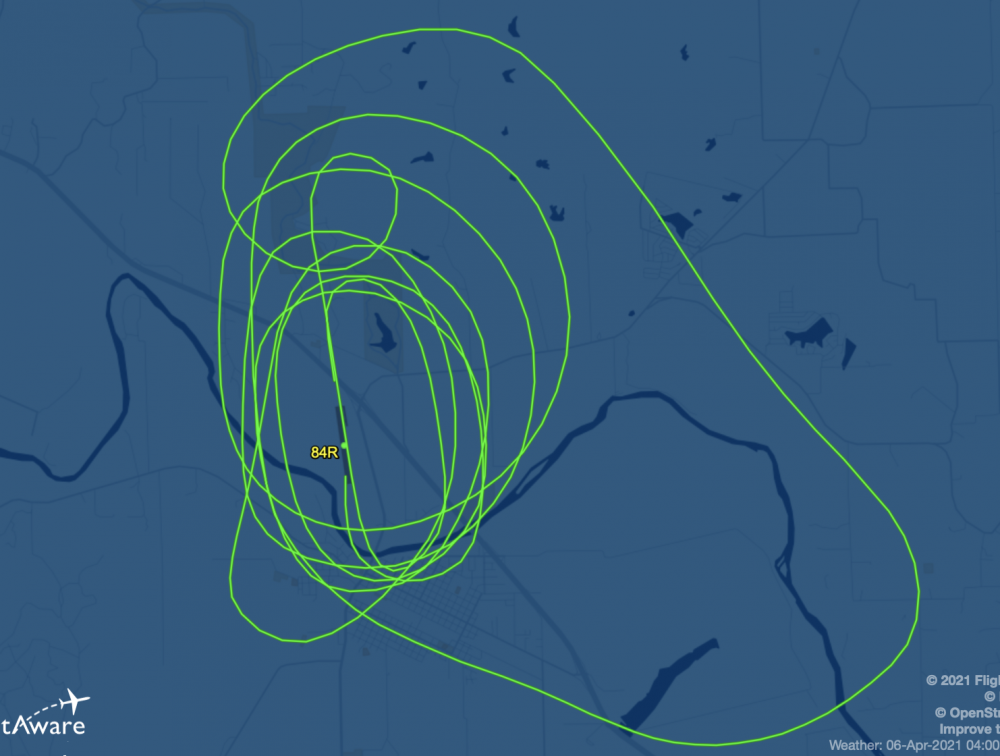


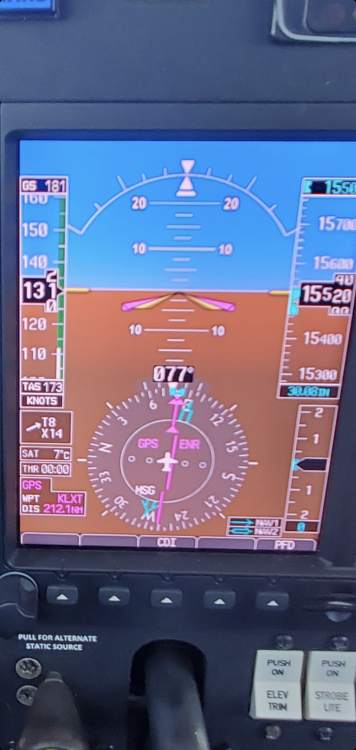
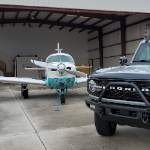
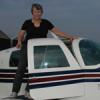


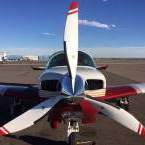
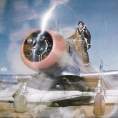
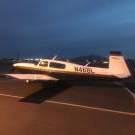

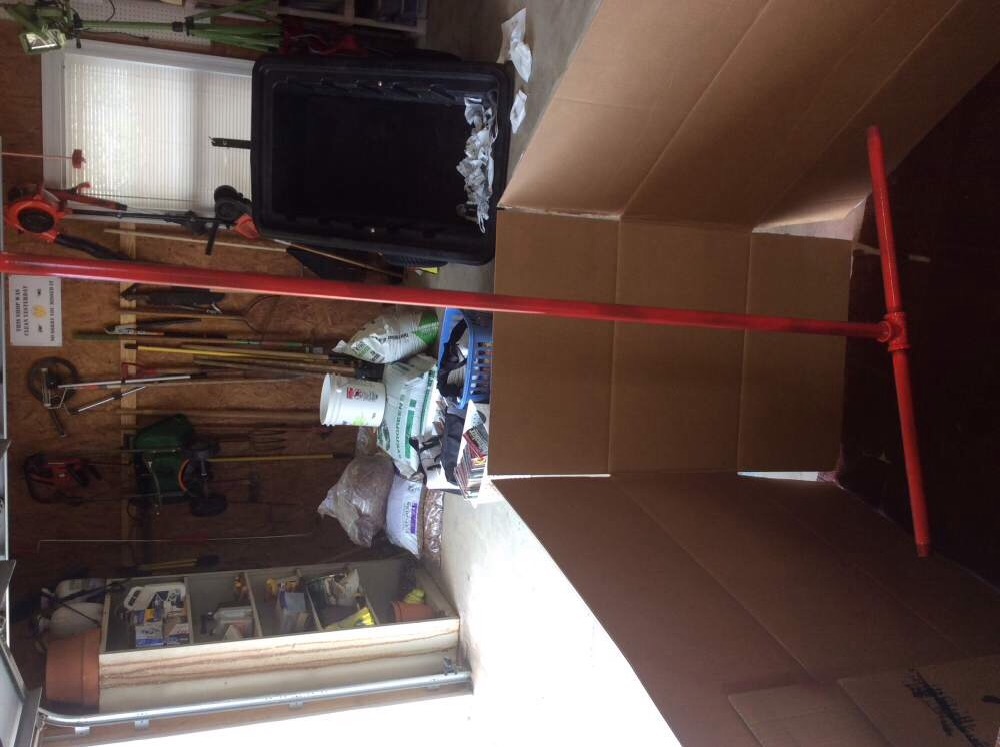
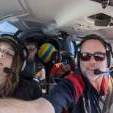



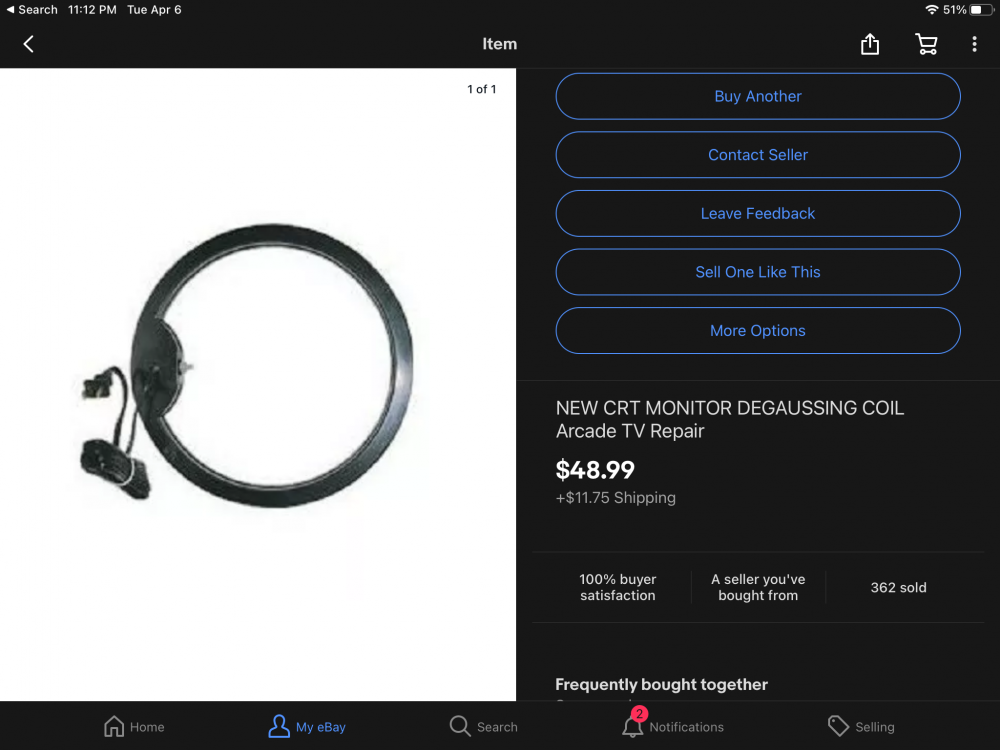




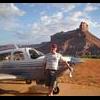





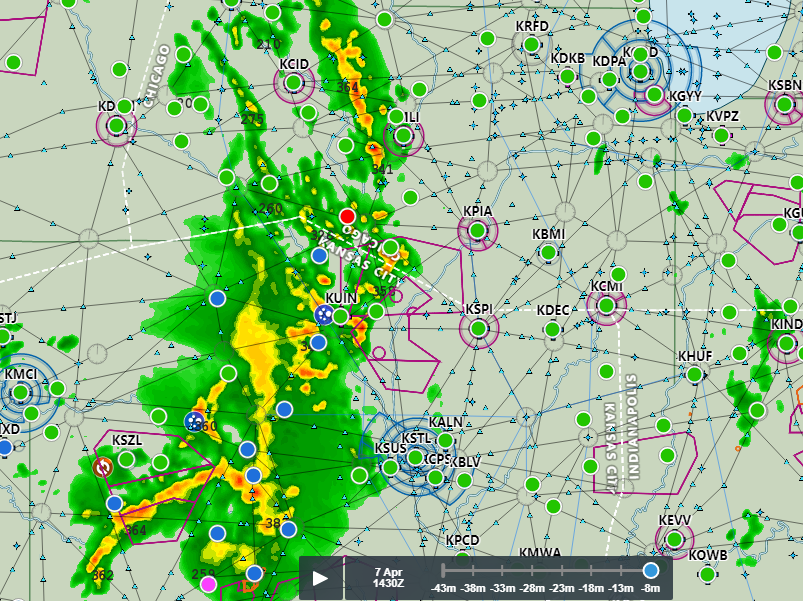


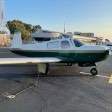

.thumb.jpeg.489b70c24e5bd6949d8d8eec81ebece5.jpeg)